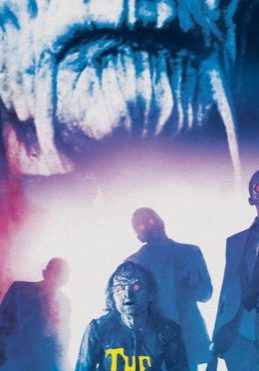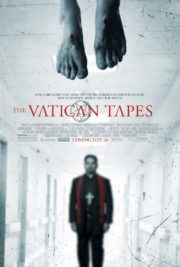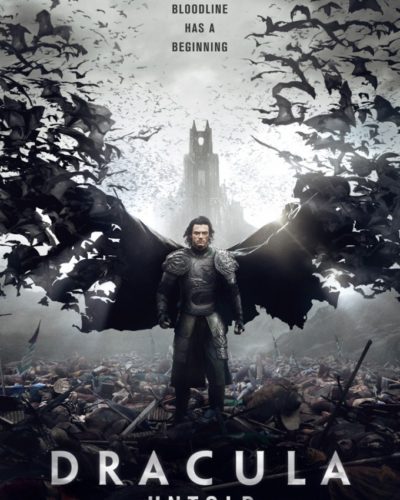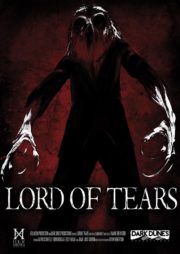A Dance with Darkness: Unearthing “The Demon’s Rook”
“Chaos is the same as it has always been,” declares a somber voice in “The Demon’s Rook,” hinting at the timeless terror that awaits. Delving into the arcane corners of horror, the 2013 film directed by James Sizemore (who also stars in the film) presents an ambitious tribute to 1980s low-budget horror through a tale steeped in demonology and folklore.
The feature, a labor of love for the director, tells the story of a young boy named Roscoe who inadvertently opens a portal to another world. His interaction with dim, otherworldly entities leads to catastrophic events in his hometown as he grows up. The film’s abstract narrative weaves a coming-of-age story with classical horror elements, setting the stage for the viewer’s descent into its nightmarish world.
Mood and Mayhem: Crafting the Chills
“The Demon’s Rook” thrives on an intensely eerie atmosphere cultivated through meticulous attention to visual and auditory stimuli. Sizemore’s efforts to build a creeping sense of dread are palpable, with the narrative unfolding more through macabre imagery than dialogue. The film revels in a foreboding that grows, subtly at first, as Roscoe’s past choices bring forth hellish consequences.
The grainy textures and atmospheric lighting infuse the visuals with an almost nostalgic terror reminiscent of early horror flicks. This restrained approach to storytelling, coupled with the judicious use of vibrant, sometimes jarring colors, creates an aura of surreal nostalgia and unease.
Lens of Horror: Cinematic Shades of Fear
In terms of cinematography, “The Demon’s Rook” exhibits a gritty aesthetic that suits the genre impeccably. The clever use of shadow play crafts an ominous world lurking within our own, while surprising bursts of color enhance moments of violence and horror. Sizemore employs camera angles that evoke a sense of vulnerability, encapsulating viewers in claustrophobic terror.
The practical effects and makeup contribute a visceral element to the demonic portrayals, offering a raw and tactile dimension to the horror, distinguishing it from the frequently CGI-laden films of the modern era. This practical approach hearkens back to the golden age of horror, when intricacy and resourcefulness bred fear from the sheer ingenuity of effects.
Evocative audio design accompanies the visual spectacle, with echoing incantations and dissonant chords that dissect the silence in captivating crescendos. Strategic silences offer a contrast to the on-screen carnage, amplifying the impact of each sequence and ratcheting up the tension to an almost tactile level.
Screams and Subtext: Acting and Themes
The performances in “The Demon’s Rook” are raw and earnest, contributing to the grounded feel amidst supernatural chaos. The characters navigate the terror with a blend of bewilderment and determination, their reactions setting a convincing tone for the pervasive darkness of the film. Sizemore himself, embodying both director and protagonist, shoulders much of the narrative’s emotional weight, navigating his horror-laden odyssey with palpable distress.
The film doesn’t shy away from gloppy gore and shock, employing such elements strategically rather than gratuitously. The horror straddles the line between psychological and supernatural, adhering to the tenets of each subgenre while also challenging convention through its unique visual storytelling.
Underneath its facade of demons and doom, the film touches subtly on themes of innocence lost and the harrowing journey to redemption. These deeper layers provide additional substance, making the hellish ride all the more haunting for its philosophical underpinnings.
The Final Summoning: Verdict and Viewer’s Guide
“The Demon’s Rook” is a chiaroscuro of horror—contrasting lights and shadows to design a dread-filled experience. It is an indie ode to the grit and bravado of 80s horror, proving that evocative storytelling doesn’t require a blockbuster budget. While the film may not be universally terrifying, it is undeniably intriguing and replete with thought-provoking moments that elevate it from mere gorefest to a cinematic lexicon of night terror.
This is a film for horror enthusiasts, especially those with a penchant for indie productions that dance to the beat of their own, eerie drum. It may be less accessible to the casual viewer due to its abstract narrative and unapologetically lo-fi approach, yet it’s this authenticity that makes it all the more appealing to a specific sect of fans.
Considering its graphic content and intensity, viewer discretion is advised. Nonetheless, with its analog heart beating to a sinister rhythm, “The Demon’s Rook” stands as a commendable piece in the indie horror scene, exemplifying how genuine terror can still be conjured in the shadows of the low-budget specter.




